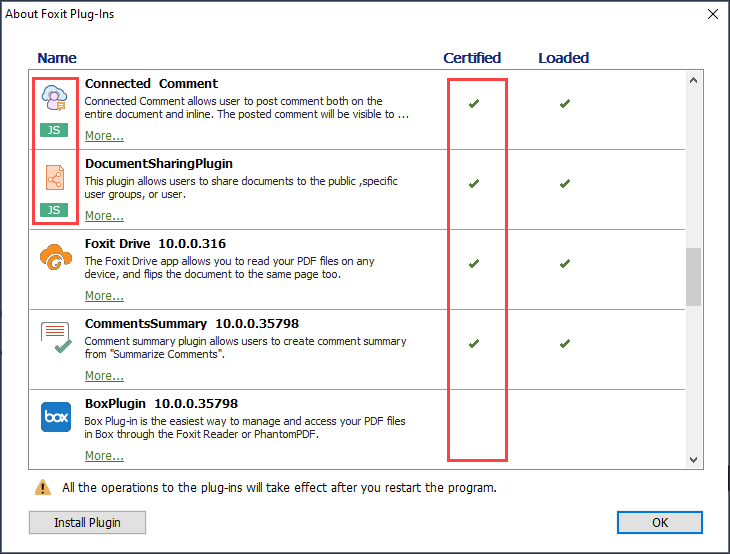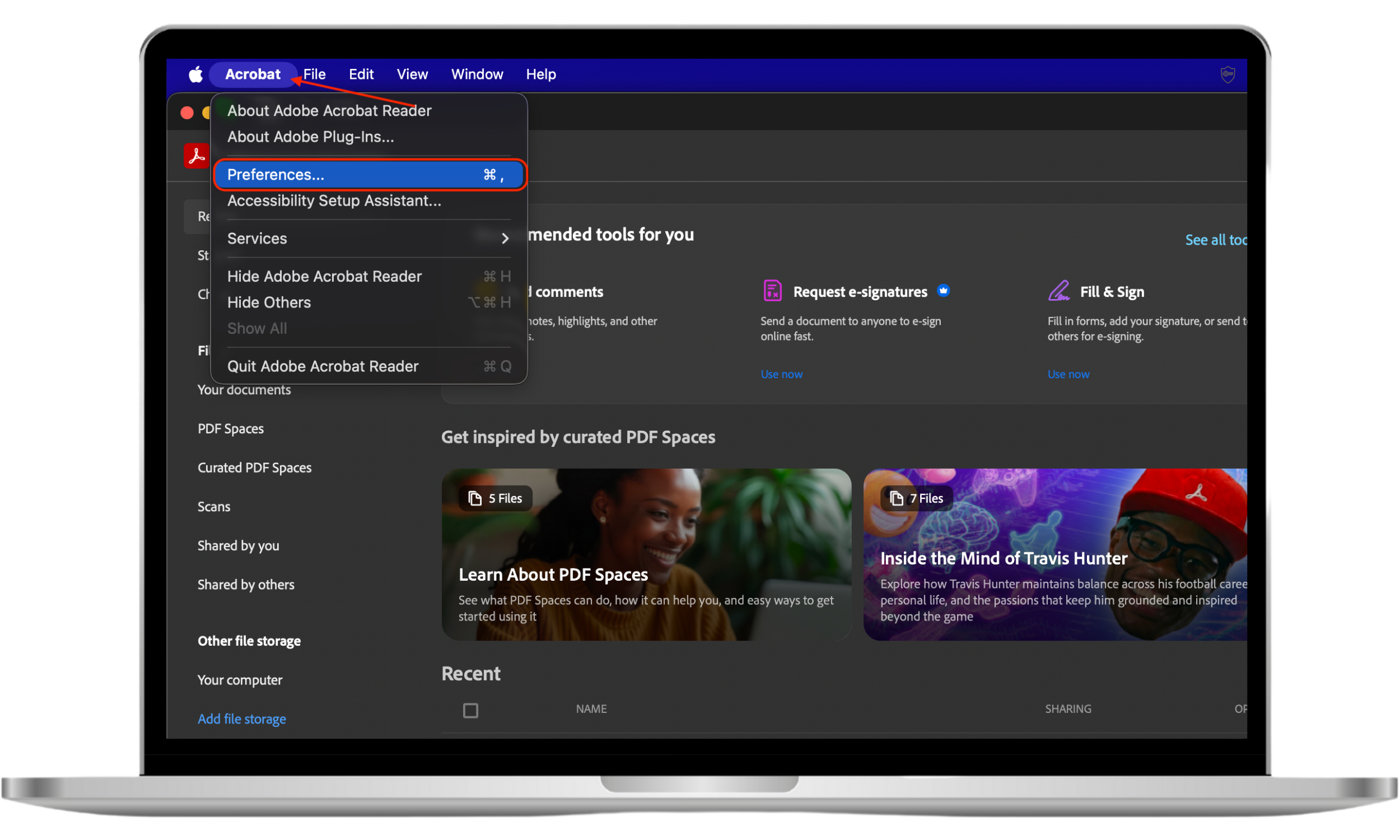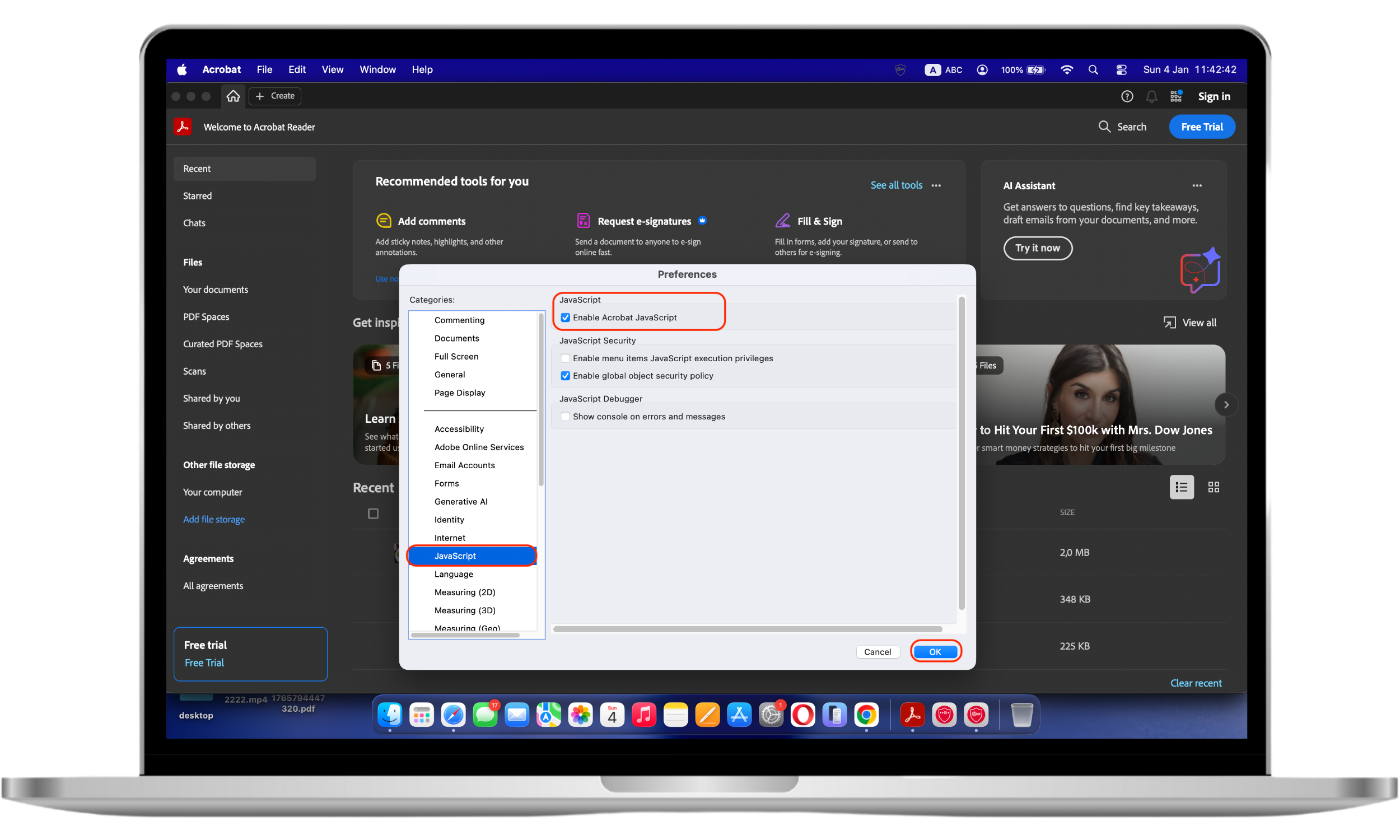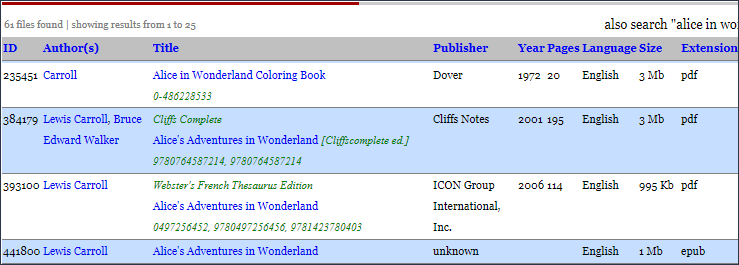Table of contents
- How can a PDF file contain a virus?
- Can PDFs be used to deliver malware?
- Are PDF books safe?
- How can an infected PDF contaminate your computer?
- Malicious scripts in PDFs
- Malware disguised as PDFs (PDF phishing)
- Emails with infected PDFs
- Fake clickbait books
- What should I do if I suspect a PDF has infected my computer?
- Common PDF malware techniques and how to avoid them
- Is it safe to download free PDFs from internet libraries and search engines?
- The risks of downloading PDFs from free websites
- Where to download ebooks without viruses?
- How safe are other ebook formats?
- What rules to follow to avoid getting a bookworm?
- Conslusion
The Portable Document Format — or PDF as we know it — is probably one of the most frequently used file formats for sending documents. It can be found everywhere from schools to offices and banks, successfully replacing print-outs — and that's why malicious actors love it, too.
PDF files are not easily editable compared to rich text files like Microsoft Word's DOCX or Apple's PAGES files. Since you cannot just open a PDF and edit it as you please (even if you have special and often pricey software), PDFs are used for contracts, bank statements, and any other important documents that need to be signed and sent.
The “fill & sign” abilities of PDFs are where the danger lies. They work inside PDFs with the help of special scripts. Unfortunately, this means that malicious code can be lurking within or alongside such scripts. And a virus hiding within a PDF file can quickly infect your computer, be it a PC or even a Mac.
When you download a book, hard-to-find scientific report, or free PDF template for your small business (especially if such documents come from untrustworthy websites), you might find a nasty surprise inside. Worse still — your PDF might turn out to be nothing but a virus disguised as a PDF file.
Let's see what dangers can hide within PDF files and how to counter them.
How can a PDF file contain a virus?
PDFs can have viruses that come embedded with a code that makes documents signable and (somewhat) editable. The mechanics are very similar to virus-infected Microsoft Word files. While their malware hides inside macros scripts, an infected PDF file will contain malicious JavaScript code.
Pro tip
While PDFs are not inherently dangerous, hackers use advanced social engineering tactics to trick you into opening infected PDFs. Be cautious when downloading PDFs from unverified sources or unsolicited emails.
Can PDFs be used to deliver malware?
Yes, PDFs can indeed be used to deliver malware. Malicious actors often exploit vulnerabilities in PDF files by embedding harmful scripts, such as JavaScript, which can be executed when the file is opened. These scripts can cause various issues, from stealing sensitive data to installing spyware or other types of malware on your device. Always be cautious when downloading PDFs from unknown sources and ensure you have proper security measures in place to prevent infection.
Are PDF books safe?
A PDF is not an executable file, so it cannot infect your machine while sitting idle on your hard drive — the malware in a PDF needs to be interpreted and executed through PDF reader software.
This is why a PDF virus cannot infect most older e-readers and modern e-paper and e-ink books. Dedicated e-reader devices run an extremely abridged version of Linux OS or a custom OS under the hood, so are unable to interpret and run malicious scripts.
Unfortunately, Android-based e-readers with regular touchscreens (devices like Amazon's Kindle Fire) are potentially vulnerable. iOS devices should be safe from viruses in PDF files due to app memory sandboxing. However, many viruses are emerging for iOS, too, so it's worth being cautious.
PC and Mac machines are the most vulnerable to threats hidden in ebooks. This is because the software for opening and editing PDF files on desktop and laptop computers can interpret and run the malicious code injected by a hacker.
How can an infected PDF contaminate your computer?
Let's look at how PDF files containing malware infect your computer and where such files usually come from.
Note
Always disable third-party plugins and JavaScript execution in your e-reader's settings to protect your device from malicious scripts in PDFs.
Malicious scripts in PDFs
PDFs often contain scripts for extended capabilities. For example — in addition to fill and sign functionality — they can display the current date, add print buttons, format data, perform calculations on the input, etc. It's possible to add such scripts with the help of JavaScript using software like Adobe Acrobat Pro. Unfortunately, hackers will likely use more technically intricate ways to add malicious code to PDF files.
PDF files need PDF reading software to open and display their contents. This way, PDF readers become unwilling accomplices of hackers because either the apps themselves or their plugins will be able to run the injected code. Third-party plugins in PDF-reading software can also be a gateway for malicious scripts — if possible, you should disable them.

Malware disguised as PDFs (PDF phishing)
You have probably heard about email phishing — hackers send you emails pretending to be somebody else and try to make you click links that will either steal your data or infect your computer with a virus. There are two PDF-related variations of phishing:
Emails with infected PDFs
An approach very similar to regular phishing. As a rule, such emails are executed better than generic phishing emails and target specific recipients. The content of the email won't have suspicious links. Still, it will contain either PDF files with viruses in the scripts, download links to malware files, or have a trojan virus disguised as a PDF in the attachment (something like document.pdf.exe).
Fake clickbait books
These PDF files pretend to be the books you want to download online. While looking for a specific book or document online, you might come across a free download link.
Initially, it might look like you've struck gold — the author, title, and cover match what you were looking for. Then, there is a proper intro, maybe even a couple of pages the hackers took from an official preview available online.
However, a few pages in, the text ends, and there is a download link that supposedly leads you to a complete copy of this book. Best case — the link will take you to a paid site with pirated content. Worst case — the link will download a virus. So don't risk it, and avoid clicking such links.
What should I do if I suspect a PDF has infected my computer?
If you suspect that a PDF has infected your computer, immediately run a full scan with your antivirus software to detect and remove any malware. If the file has already been opened, it's essential to disconnect from the internet to prevent further communication with any remote servers. Afterward, update your security software and perform another scan. You may also want to manually check for any unusual behavior on your device and change passwords if you suspect personal information has been compromised.
Common PDF malware techniques and how to avoid them
Malicious actors use several techniques to hide harmful scripts in PDFs. These can include:
- JavaScript scripts
- Embedded forms, and even
- Hidden URLs within a document.
To protect yourself, always disable JavaScript in your PDF reader and avoid clicking any links or interacting with forms unless you are sure the document is from a trusted source.
Here is how to disable JavaScript in PDF readers:
- Open Adobe Acrobat Reader.
- Go to Acrobat Preferences.
- Click on JavaScript from the list on the left.
- Uncheck the option Enable Acrobat JavaScript.
- Click OK to save the settings.


Disabling JavaScript will stop any malicious scripts hidden in PDFs from running automatically, reducing your risk of infection.
Is it safe to download free PDFs from internet libraries and search engines?
The initial question that should be asked about online libraries — isn’t downloading free pdf books illegal? It's not illegal to download books that are either free or have entered the public domain due to copyright expiration. However, most books on such websites like PDFdrive are pirated content. Their disclaimers usually warn against downloading any books you have no right to download for free.
PDFdrive is one of the largest collections of free PDF downloads. So is PDFdrive safe? It contains everything from legitimately free books, educational materials, and voluntarily shared files, to pirate content — the danger is that anybody could add ebook files with any malware lurking inside at some point.
While websites like PDFdrive, Library Genesis, or Internet Archive try to keep their sites and content safe — most of that content is stolen, isn't checked for copyright infringements, and can be hijacked and added there by anyone including cybercriminals.
Trojan fake PDF files and malicious scripts can sneak into any PDF that you try to download. IPirate sites do try to provide their readers with quality content to keep them returning to watch or click the ads. However, it's impossible to keep track of billions of books, documents, magazines, etc.

Apps that offer free ebook downloads carry all the same dangers as free online libraries. Often, they are nothing but an app-based wrapper or a shortcut to some external online library. What's worse — such installable apps can be gateways to malware for your iPhone, iPad, or Android phone.

So, it looks like free online libraries are not just tempting sources of freebies, but decent malware repositories, too. Luckily, there are places where you can download books legally and sometimes even for free.
The risks of downloading PDFs from free websites
While it might be tempting to download free PDFs from websites like PDFdrive or Library Genesis, these sites often host pirated content, which can be a breeding ground for malware. Even legitimate-looking files can contain hidden malware or trojans. Always exercise caution when downloading PDFs from unknown or unverified sources and consider using a secure, paid service instead.
Where to download ebooks without viruses?
The safest places for buying and downloading ebooks are reputable booksellers like Amazon, Barnes & Noble, the book sections on iTunes or GooglePlay, official online book stores, or direct downloads from the living authors. They also feature public domain books for free so you don’t have to splurge immediately to have something interesting to read.
Ultimately, the safest way to obtain and read ebooks is to do it via an official distributor. Especially so when your target device is a dedicated e-paper or e-ink device reader and not a fully-functional smart tablet in disguise (Kindle Fire, we're looking at you). This way, you also won't have to worry about the format of the book you're about to download.
How safe are other ebook formats?
Are ebook formats other than PDF as likely to contain viruses? Well, it's much harder, but still possible to sneak a virus into a MOBI or AZW file for Kindle. An infected EPUB (preferred ebook format for iPhones and iPads) can also be a real thing because EPUB files are essentially special archive files containing HTML, CSS, and JavaScript scripts.
But as said before, malicious code needs interpreters. So digital e-ink/e-paper e-readers are most likely to be safe even with an infected ebook on board. However, if such files are opened on your computer, there might be consequences.
What rules to follow to avoid getting a bookworm?
As you've learned, even seemingly harmless PDF or EPUB files can infect your computer. So if you really need a book, but it cannot be bought through a reliable online vendor, before you download from some shady website, try to:
- Look for it at the library. You'd be amazed at the finds at your local library or the library of your local college or university.
- Find out if you can buy it directly from the author or the current copyright holders.
- Look for a different format — the book could be available as an audiobook or a video lecture.
If all of this fails and you must get a book from a free online library, there are ways to keep your devices safe.
How to avoid getting a virus from a PDF (or another ebook format):
- Use a pre-moderated online library requiring registration (like Scribd).
- Make sure there are no mistakes in the book title or the author's name. If there are, then you might have spotted a fake.
- Don't open the ebook directly on your computer — use cloud readers (for example, PocketBook Cloud or Google Drive's preview capabilities) instead of opening suspicious files on your machine.
- If you must open the book on your computer, disable third-party party plugins and JavaScript execution in your e-reader's settings.
- Scan the PDF file for a virus with antivirus software before opening it.
- Don't click any links inside the book or document.
If you suspect that a PDF file has already infected your computer, run a full antimalware check using your antivirus software.
If you're worried about malicious PDFs or other spyware threats, Clario Anti Spy provides a comprehensive solution to protect your device. Use the Anti-spy setup feature, which offers a step-by-step guide to manually secure your device’s system settings. This includes reviewing app permissions (camera, microphone, location) and disabling features that could be exploited by malicious scripts or stalkerware. The setup also includes crucial checks for vulnerabilities that hackers often target.
Here is how to use Clario Anti Spy’s Anti-Spy setup feature:
- Download Clario Anti Spy, create an account, and sign in.
- Under the Anti-spy setup section, select Set up.
- Follow the step-by-step guide to review your device’s permissions and security settings, ensuring that malicious scripts and spyware cannot exploit vulnerabilities.

Conslusion
To minimize your exposure to malware and protect your devices, always be cautious when downloading PDFs, especially from untrusted sources. By following the steps outlined, such as disabling JavaScript, scanning files for viruses, and using secure readers, you can significantly reduce the risk of encountering harmful PDF files.
For added protection, you can use Clario Anti Spy's Anti-spy setup on your phone. This step-by-step guide helps you secure your device’s system settings by reviewing app permissions and disabling vulnerable features, ensuring you stay protected from malware, spyware, and digital threats hiding within PDFs and other files.
Use these precautions, and don't download suspicious PDF files from non-trustworthy websites if you can avoid them. It's better to pay for a book than for repairs to your machine if it gets infected. Happy reading!
Read more:


